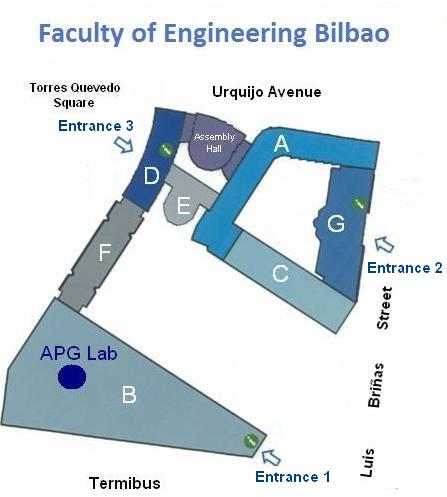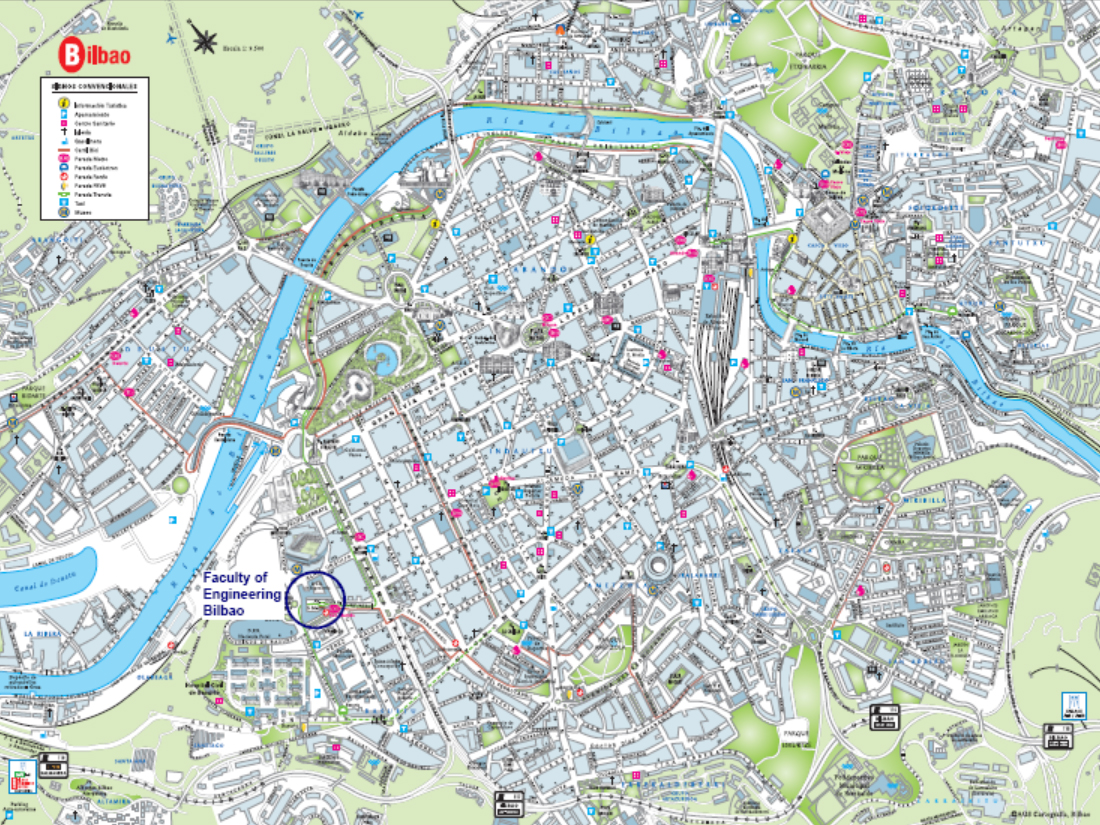Location

The APG Laboratory is located at the Faculty of Engineering in Bilbao, Spain.
This faculty is in the city centre of Bilbao, between San Mamés soccer stadium and Bilbao Bus Terminal, Termibus.
It has good public transport connections such as:
- Underground (San Mamés station)
- RENFE's suburban train (San Mamés station)
- EuskoTran tram (San Mamés station)
- Termibus (Bus station): Several Bilbobus and Bizkaibus bus lines. Shuttle to the airport
Arriving by foot

The Faculty can be accessed from 3 different streets (see the plan below or go to Google Maps)

The easiest way to get to the APG laboratory is through the entrance 1, the nearest to the Bus Terminal and right next to "San Mamés" underground station (Luis Briñas exit).
The laboratory is located at the basement floor of the "B" building, in the S1B11L.
Arriving by plane

Bilbao´s airport is located 12 kilometers from Bilbao, in the municipality of Loiu.
If you arrive to Bilbao by plane there are two options to get to the faculty:
- Take a taxi, which would cost you aprox, 20 € and takes about 20 min.
- Take the bus, line A3247, which would cost you 1.40 € and leaves the airport every 20 min. The last stop will be in the Bus Station, next to the faculty.
Arriving by bus

If you arrive by bus, you will have no problems finding the faculty since it is next to the bus station.
Arriving by car

To get to the faculty by car you should get the "Sagrado Corazón" highway exit when reaching Bilbao.

